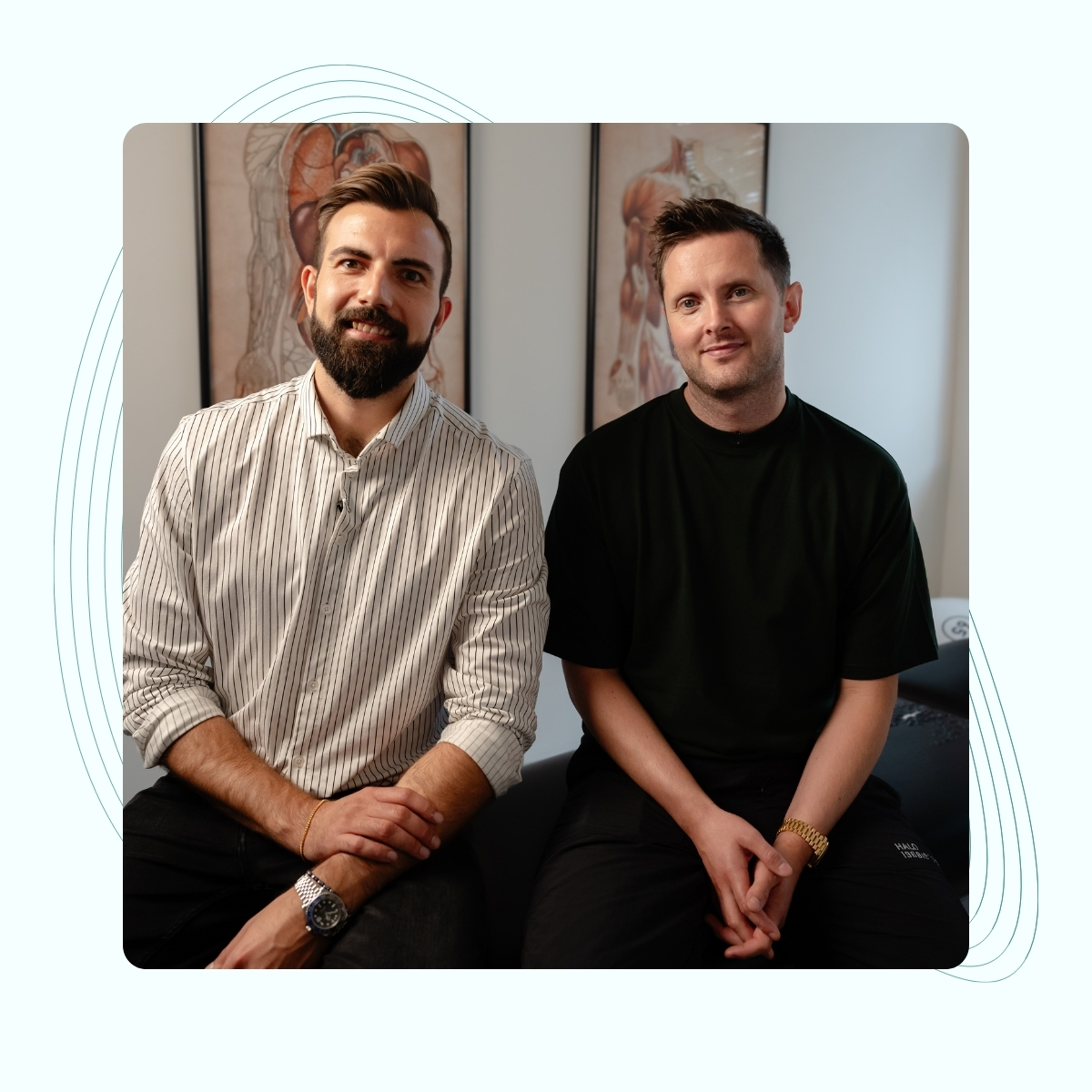We treat
Ear stone
Learn more about Benign Paroxysmal Positional Vertigo (BPPV)
What is an ear stone?
Ear stones, also known as Benign Paroxysmal Positional Vertigo (BPPV), are a benign condition of dizziness that is related to the inner ear. The inner ear is home to the organ of balance. The organ of balance contributes to the control of balance and consists of 3 fluid-filled canals and two cavities.
Jump to section [Vis]
The balance organ
In the semicircular canals there is a fluid called endolymph. The inside of the semicircular canals is covered with small sensory hairs, which move in relation to the endolymph when the head rotates. This creates an electrical impulse that, via the balance nerve (n. vestibularis), sends a signal to the brain, which registers the direction of the head. That is why you do not get confused when you do a somersault, for example. The two cavities contain both endolymph, sensory hairs and calcium carbonate crystals. The crystals help to perceive linear movements of the head (accelerations without changing direction). For example, braking or accelerating in a car.
How do ear stones occur?
Ear stones occur when one of these crystals strays from one of the cavities and into one of the canals.
The crystal is affected by gravity and will therefore slowly sink down through the arch and like a piston push the endolymph around in the arch. This continues for about 15 seconds, until the crystal reaches the lowest point in the arch. The crystal thus disrupts the endolymph, which sets the sensory hairs in the wrong movement, and thus gives an incorrect signal to the vestibular nerve. The false signal does not match the signal that the brain receives from the opposite balance organ. The mismatch between the two balance organs is perceived by the brain as a rotating sensation. The incorrect signals directly affect the eye’s motor response and thus also the postural control (the ability to stay upright). This is why you experience dizziness.

Different types of ear stones
A distinction is made between two types of ear stones, free floating/loose ear stones (canalolithiasis) and fixed ear stones (cupulolithiasis).
Loose ear stones are easy to remove, while fixed ear stones are more difficult to remove.
The following ear stone types exist:
- Loose ear stones in the posterior arch
- Fixed ear stones in the posterior arch
- Loose ear stones in the anterior arch
- Fixed ear stones in the anterior arch
- Loose earstones in horizontal arches
- Fixed ear stones in horizontal arches
- Ear stone in several arches (multi-channel)
- Ear stones in the short archway
Symptoms of ear stones
- Violent, rotating/spinning sensation of dizziness (rotatory vertigo)
- Short-term seizures: 10-60 sec
- During attacks, you may experience nausea and/or vomiting.
- Seizures are provoked by changes in head position, e.g.:
- Turning over in bed
- Getting from lying down to sitting
- Getting from sitting to lying down
- To bend forward
- Looking up at the ceiling
Why do people get ear stones?
The cause of ear stones is most often idiopathic. This means that the reason why the ear stone breaks free from the cavities is not known. However, it is known that if you have had a concussion or skull fracture, you are at increased risk. Similarly, dental and ear surgeries where drills are used can also cause ear stones to break loose.
Source: Regionsyddanmark.dk
Exercise for balance and head-movement awareness
In this video, Emil shares a gentle head-movement sequence that many people use to explore balance, coordination and spatial orientation.

Who gets ear stones?
93% of all dizziness cases, in general practice, are caused by ear stones, Meniere’s disease or a virus on the balance nerve.
In adults, ear stones alone account for 60% of these cases.
The incidence is estimated to be 11-64 per 100,000 per year, while the prevalence is very difficult to measure.
Ear stones can occur at any age. However, the condition is rarely seen in children. The average age of people who get ear stones is 50-60 years. Women are affected more often than men. The prognosis is good, but the recurrence rate is approximately 30% per year.
Sources: Sundhed.dk, Svimmelhed.dk
Test for ear stones
You can be tested for ear stones by your doctor, an ear, nose and throat doctor, a specialized physiotherapist or your osteopath.
When testing for ear stones, the auditory canal and the affected side must be identified. Your osteopath will need to determine whether the ear stone is located in the anterior, posterior or horizontal auditory canal, and whether it is located in the right or left vestibular organ.
The ‘Dix-Hallpike’ test examines whether the ear stone is located in the anterior or posterior arch.
The ‘Supine-roll test’ examines whether the ear stone is located in the horizontal arch (not discussed in this article).
The tests are read by correctly interpreting nystagmus. Nystagmus is an involuntary jerky movement of the eyes. Nystagmus occurs because an incorrect signal is sent to the brain that the head is still moving, even though it is at rest.
The direction and amplitude of the nystagmus tells us which arch we need to treat.
A test is only positive if nystagmus is present.
Scientific treatment in the healthcare system
The classic treatment for ear stones consists of repositioning maneuvers that guide the ear stone into place in the cavities. With very specific movements of the body and head, gravity is utilized to move the ear stone the right way around the arches.
Treatment of ear stones is usually very quick. Loose ear stones can usually be removed by performing the maneuver just once. Cases with fixed ear stones can be more difficult to get into place, and therefore you often have to go through the treatment several times.
Depending on which arch the ear stone is located in, there are different maneuvers to reposition it.
Various maneuvers are reviewed later in the article under ‘What can you do about ear stones?’
After successful treatment with repositioning maneuvers, some people still experience a tinge of dizziness, but in a different way than the previous rotatory vertigo. These individuals may benefit from a training approach called “Vestibular Rehabilitation”.
Vestibular rehabilitation is a general term for physical training that aims to reduce dizziness, improve balance and visual stability by helping the central nervous system compensate for vestibular dysfunction.
Vestibular rehabilitation is carried out by a physiotherapist or osteopath who specializes in the field of dizziness.

Osteopathic treatment of ear stones
In addition to performing the repositioning maneuvers, the osteopathic approach to ear stones will be very holistic. Since the philosophy of osteopathy is based on the body having self-healing mechanisms, it is therefore essential to give the body the best conditions to be able to carry out these processes. Therefore, the osteopath will examine whether all the body’s systems are in balance. The manual treatment will, among other things, be based on optimizing the systems that have a direct and/or indirect impact on dizziness. For example:
Nervous system and dizziness
The 8th cranial nerve, n. vestibulocochlearis, supplies the inner ear. The nerve has two branches. One branch supplies the organ of balance, while the other branch supplies the cochlea (hearing). Inflammation or compression of the nerve in its course can cause symptoms such as dizziness, poor balance and impaired hearing. Manual treatment of the nerve will ensure that the nerve can glide well and undisturbed in its course. There will be a focus on ensuring good blood circulation in the area, so that the surrounding structures have optimal conditions.
Organ system and dizziness
A large part of the gastrointestinal system has neurological supply from the vagus nerve. The vagus nerve is our 10th cranial nerve. It runs from the skull, down the chest and further down to our digestive system. One of the tasks of the vagus nerve is to tell the brain how our organs are doing. Restrictions in the organ system will, via the vagus nerve, send a signal up to the upper part of the neck, where the muscles in the area will tense up. This can cause dizziness. Typically a foggy feeling. Here there will be a large osteopathic focus on manual treatment of the vagus and gastrointestinal system, as well as advice and guidance on how you can optimize this system yourself.
Alternative treatment for ear stones
As an alternative to the classic treatment with the repositioning maneuvers, you can be examined and treated in a vertigo chair, a so-called TRV chair. This is only offered by some ear, nose and throat doctors or specialized vertigo clinics. The TRV chair is a chair that can rotate 360° in 3 different planes. This has the advantage that it is easy to treat both loose and fixed ear stones.
The treatment is performed by being strapped into the chair while sitting. From here, it rotates around, backwards and sideways in specific sequences, depending on which arch is being treated. During the treatment, you wear a pair of glasses that have a built-in camera. The camera reads nystagmus as the chair moves.
Loose ear stones can usually be guided into place with 1 – 2 treatments in the chair, while stuck ear stones often require multiple treatments.
The advantage of treatment in the TRV chair is that you do not have to actively move in certain ways. If you cannot perform the tests and repositioning maneuvers due to stiffness in the back and neck, the chair is a good alternative.
Source: Aleris.dk

How do I know if I have ear stones?
The easiest way to identify ear stones in yourself is to find out if you have the classic symptoms:
- Short-term, rotational vertigo attacks
- Provoked when you: Turn over in bed, look up, and bend forward
Source: Sundhed.dk
With the help of another person, you can test yourself at home. As previously described, it is nystagmus that reveals where the ear stone is located. It can be difficult to read nystagmus if you are not used to it – but it is not impossible.
Performing Dix-Hallpike:
- Turn your head to the side you want to test. In this example, the left balance organ is being tested.
- Quickly lie down on your back, still with your head turned to the side and tilt your head about 30° backwards
- Here the other person tries to read your nystagmus
Nystagmus is named by the direction of the “fast” beating phase. The direction of torsional nystagmus is “the direction of the top of the eyeball.” It helps to focus on one blood vessel in the eye to observe and assess the above.
A positive Dix-Hallpike test reveals, as described, whether the ear stone is located in the posterior or anterior canal: If an apogeotropic (torsional, upward) nystagmus is seen, the ear stone is located in the posterior canal.
If a geotropic (torsional, downward) nystagmus is seen, the ear stone is located in the anterior arch.
What can you do about ear stones?
If you suspect you have ear stones, you can try one of these 3 maneuvers at home. 90% of all ear stones are found in the posterior canal, so start by performing the Epley maneuver.
Treatment maneuver for ear stones in the posterior canal:
Epley’s maneuver:
All positions are held until nystagmus and dizziness are gone, or for 1-2 minutes.
Turn your head 45° to the side where the ear stone is located. This example shows a right-sided ear stone.
Quickly lie down on your back with your head 30° back – e.g. over the edge of the bed. Your head is still turned to the right.
Turn your head 45° to the left. Still with your head 30° back
Lie down on your left side, while your head is still turned to the left. Now you are looking down at the floor.
From here you sit up. The maneuver is now over.

Treatment of the anterior arch
Treatment maneuver for anterior arch:
Deep head hanging:
All positions are held until nystagmus and dizziness are gone, or for 1-2 minutes.
- Lie down on your back with your head tilted 30° backwards
- Lift your head so that your chin is as far down as possible towards your chest
- From here, sit up. The maneuver is now over.
Treatment of the horizontal arch
Treatment maneuver for ear stones in the horizontal archway:
Barbecue Roll maneuver
All positions are held until nystagmus and dizziness are gone, or for 1-2 minutes.
- Lie on your back with your head turned 45° to the affected side. In this example, the right earlobe.
- Turn your head 45° to the left
- Turn over to the left until lying on your stomach with your forearms on the floor.
- Look down with your head.
- Turn over again to lie on your right side.
- Turn once more and you will be lying on your back. The maneuver is now over.
There are several different maneuvers to treat ear stones in the horizontal canal.

Worth knowing about ear stones
Are ear stones dangerous – ear stones and falling?
Ear stones are NOT a dangerous condition in themselves. However, ear stones can result in sudden and severe dizziness, which increases the risk of falling. If you have an ear stone in your right ear, you will typically have a tendency to fall to the right side.
When should I see a doctor about ear stones?
Dizziness comes in many different forms and can be a cause for fear and concern. If you have never been dizzy before or do not know the cause of your dizziness, see a doctor. The doctor will assess what tests may be necessary. If the doctor determines that you have ear stones, they will typically recommend that you have it treated by an ear, nose and throat doctor, specialized physiotherapist or osteopath.
Ear stones and driving
Driving is not a trigger for ear stone attacks. If you have ear stones, you should not drive, as you have to orient yourself in several directions, which could potentially provoke an attack.
Ear stones and hearing
Ear stones do not affect hearing. If hearing is affected during vertigo attacks, the cause may be, Meniere’s disease.
Ear stones and stress
When we talk about stress in everyday speech, we are referring to the condition that occurs when external demands from the environment, or internal demands from the person themselves, exceed the person’s own resources.
Physically, a distinction is made between the somatic nervous system (voluntary nervous system) and the autonomic nervous system (automatic, non-voluntary nervous system). The autonomic nervous system is divided into the sympathetic nervous system (stress, fight/flight) and the parasympathetic nervous system (calm and digestion). If you are stressed, an imbalance is created in the autonomic nervous system. An increased stress level means that you will predominantly be in the sympathetic nervous system, which results in the body prioritizing being ready to fight rather than focusing on digestion. If this happens over a long period of time, you may experience a wide range of symptoms such as:
- Exhaustion
- Pain
- Migraine
- Stomach problems
- Dizziness
- Sleep problems
- Heart palpitations
- Impaired immune function
Stress is not a direct cause of ear stones, but it seems that there is a connection between emotional stress and inner ear dysfunction. One study shows the connection between several negative life events and the feeling of lack of control tends to create a greater risk of developing ear stones.
Source: PubMed

Ear stones and dizziness
There are different types of dizziness. The type of dizziness has a great impact on which dizziness conditions are suspected. The three types are:
- Rotary vertigo = a sensation that the room is spinning
- Nautical vertigo = a sensation of walking/standing on a rocking ship’s deck
- Lightheadedness (dysequilibrium) = feeling of being lightheaded
Based on these types, a distinction is made between peripheral and central conditions. Peripheral conditions relate to the inner ear, while central conditions are more serious in nature and can be related to diseases of the central nervous system or the vascular system, etc.
If rotatory vertigo is experienced, peripheral conditions are suspected. Ear stones are one of several peripheral conditions. This category also includes the conditions; virus on the balance nerve and Meniere’s disease.
Source: Pro.Medicin.dk
Difference between ear stones and vestibular nerve virus (vestibular neuritis)
As previously described, the symptoms of ear stones are short-term, rotational attacks of dizziness that are provoked by changes in position. Ear stones are a condition that is created in the vestibular organ itself, while vestibular neuritis is an acute inflammation of the 8th cranial nerve (the branch that supplies the vestibular organ), which runs from the vestibular organ in the inner ear to the brain.
- Vestibular neuritis differs from ear stones in several ways:
- Often occurs after a viral upper respiratory tract infection
- Seizures are typically constant for 1-3 days
- Occurs acutely (possibly over hours)
- Symptoms: intense rotational vertigo accompanied by nausea, vomiting and gait instability with a tendency to fall towards the affected side.
- Symptoms worsen with movement, which is why people often try to minimize movement by lying still.
- Normal hearing, no tinnitus, headache, double vision, visual field failure or other neurological outcomes are seen
Source: Sundhed.dk
Difference between ear stones and Meniere’s disease
Meniere’s disease is very different from ear stones. Ear stones are a condition that can be removed, while Meniere’s disease is a disease.
The disease is characterized by:
- Attacks with severe rotational vertigo, ringing in the ears and hearing loss in the affected ear
- Attacks last from 20 minutes to several hours.
- There may be a feeling of pressure in the affected ear.
- The symptoms of Meniere’s disease usually go away on their own.
- Symptoms can be relieved by lying still, staying calm, and taking anti-nausea medication.
- Hearing and balance are often permanently affected, in some to a mild degree, in others to a severe degree.
Source: Sundhed.dk

Often related problems
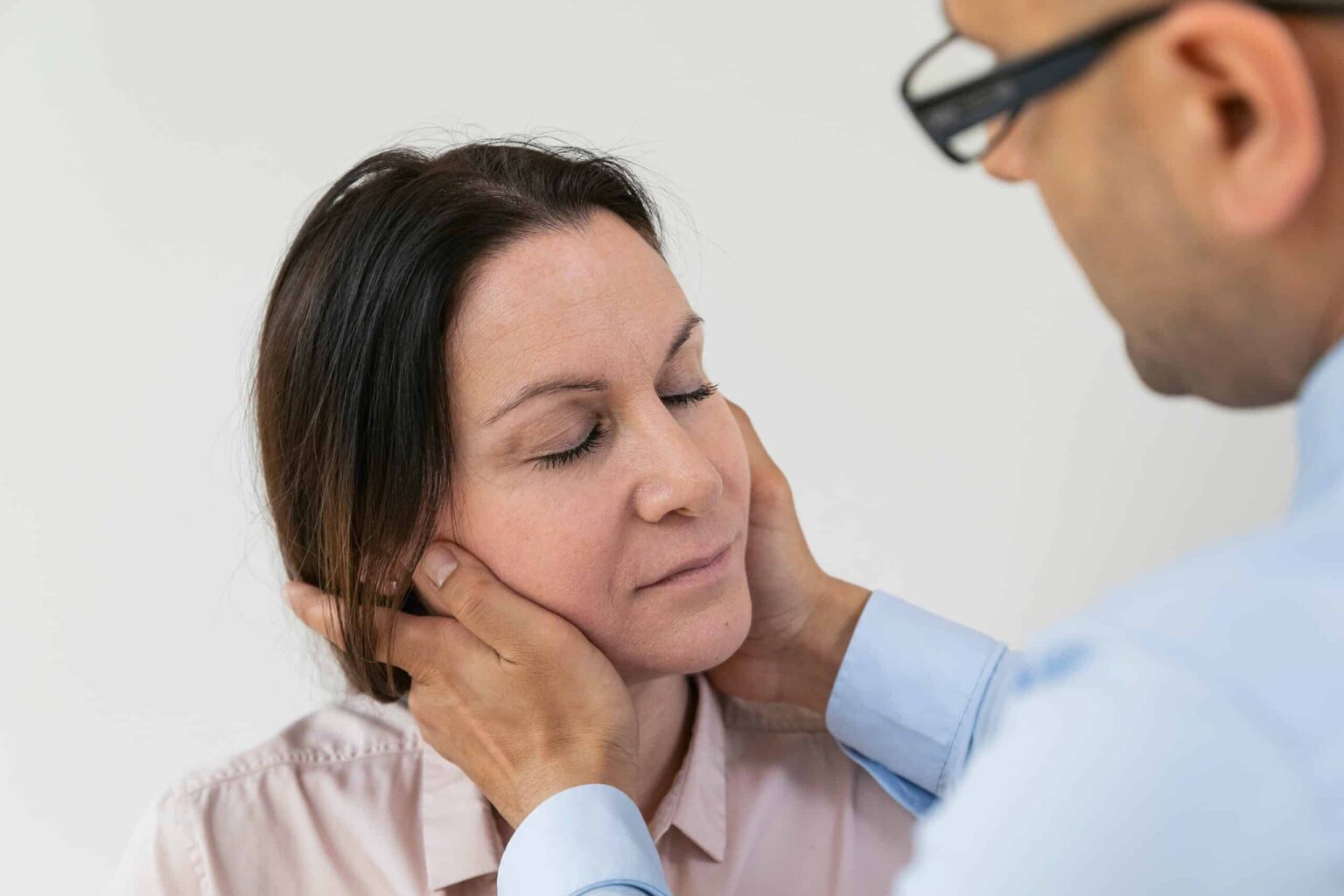
Jaw joint pain
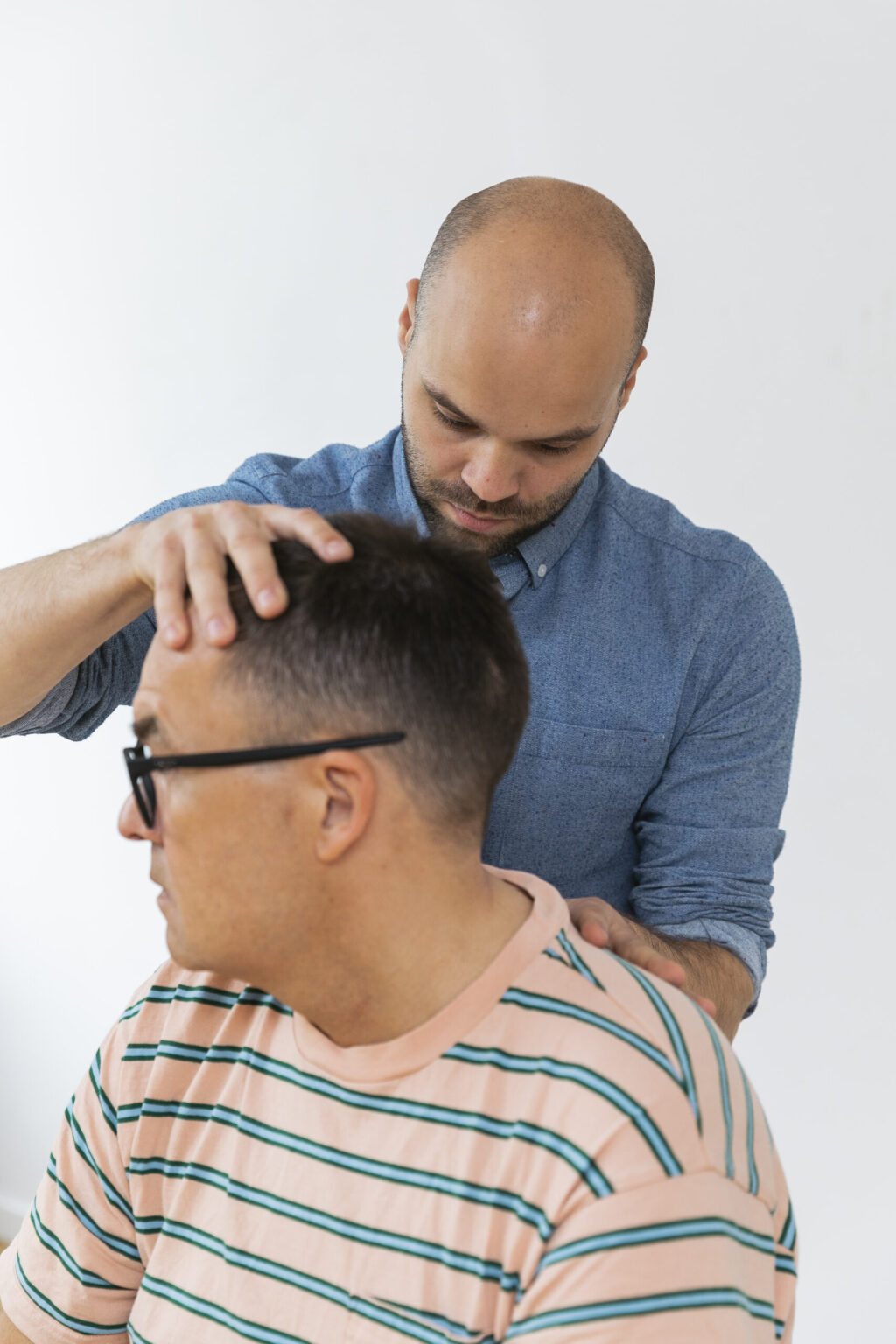
Brain hemorrhage
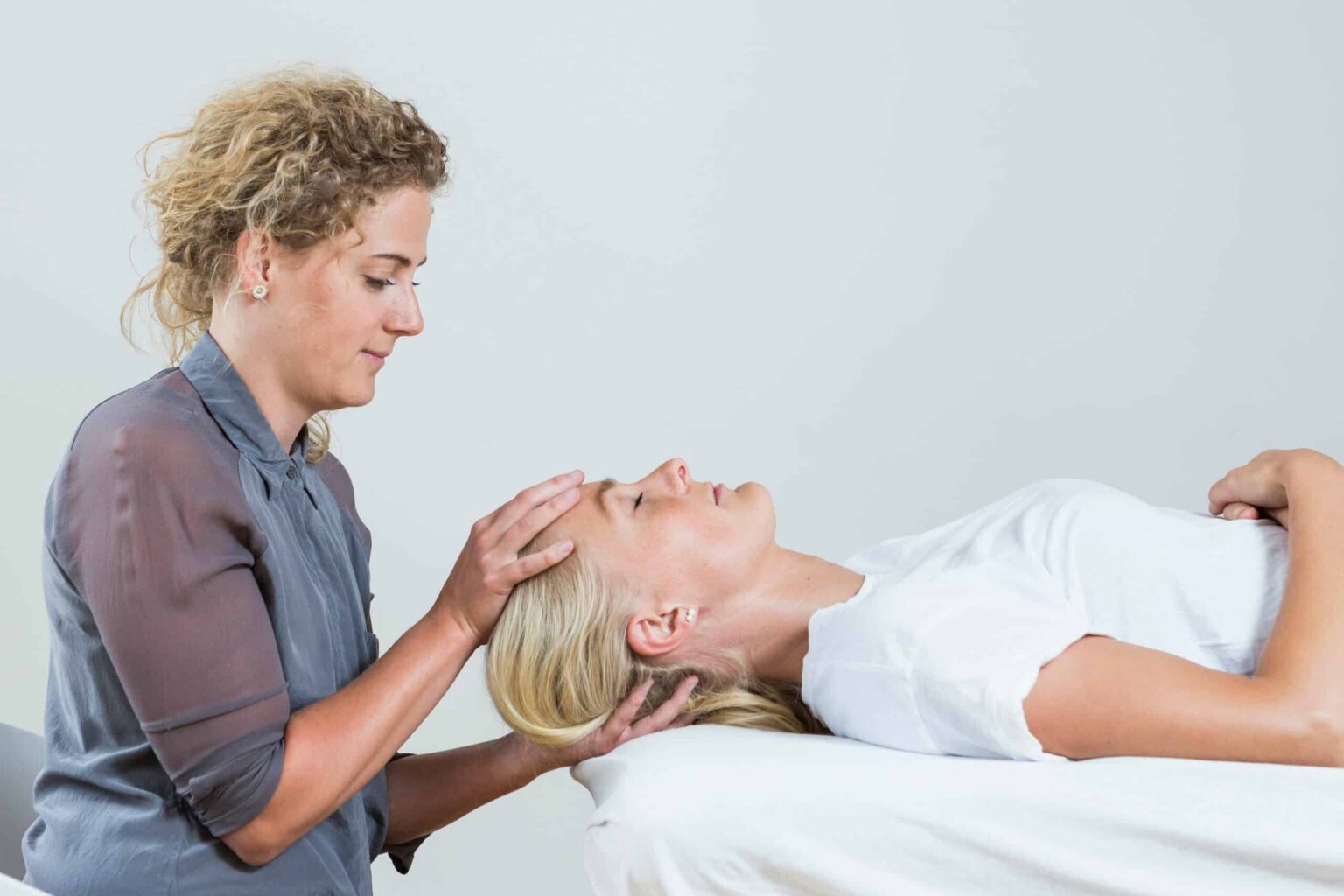
Post-traumatic headache
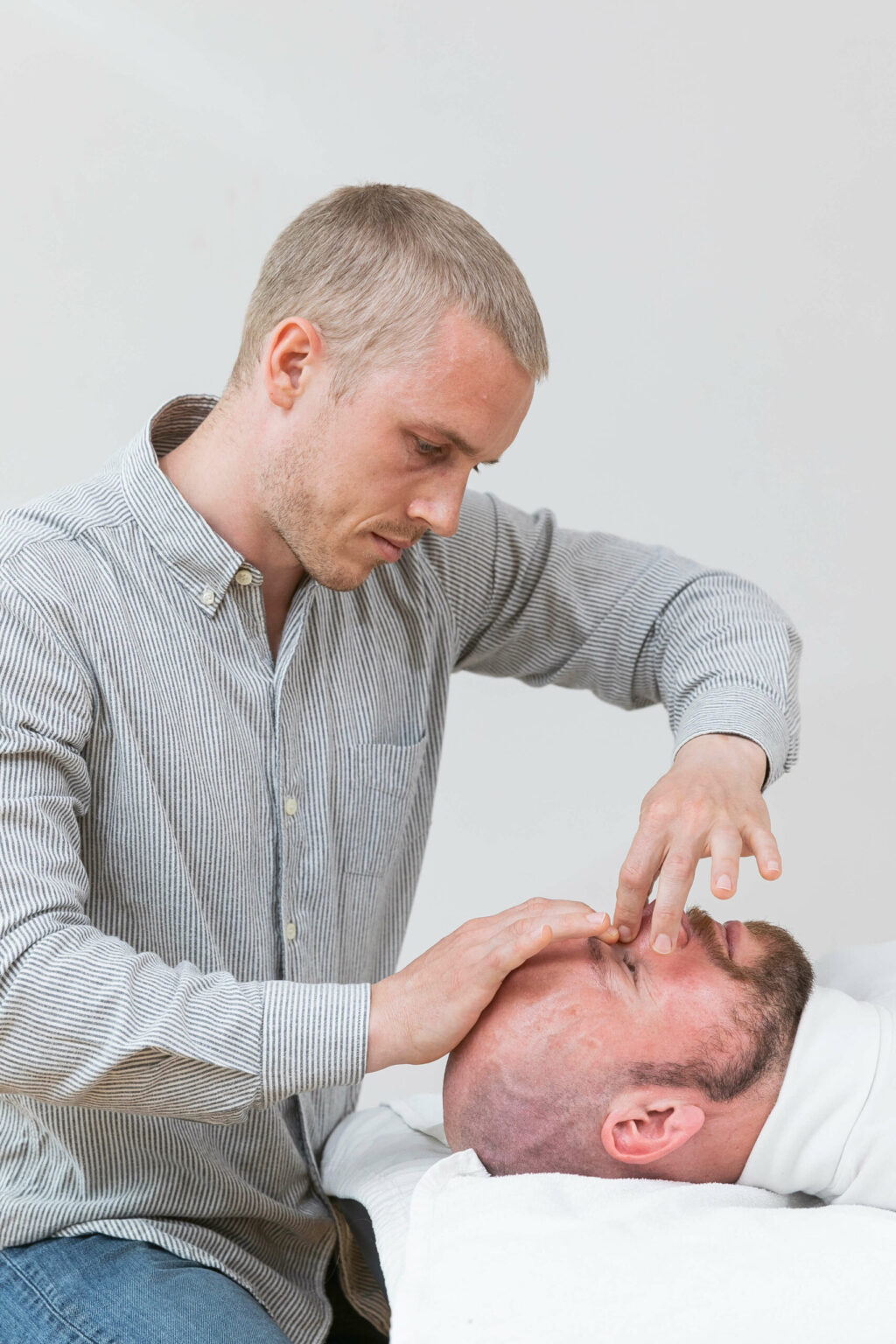
Sinusitis

Tinnitus
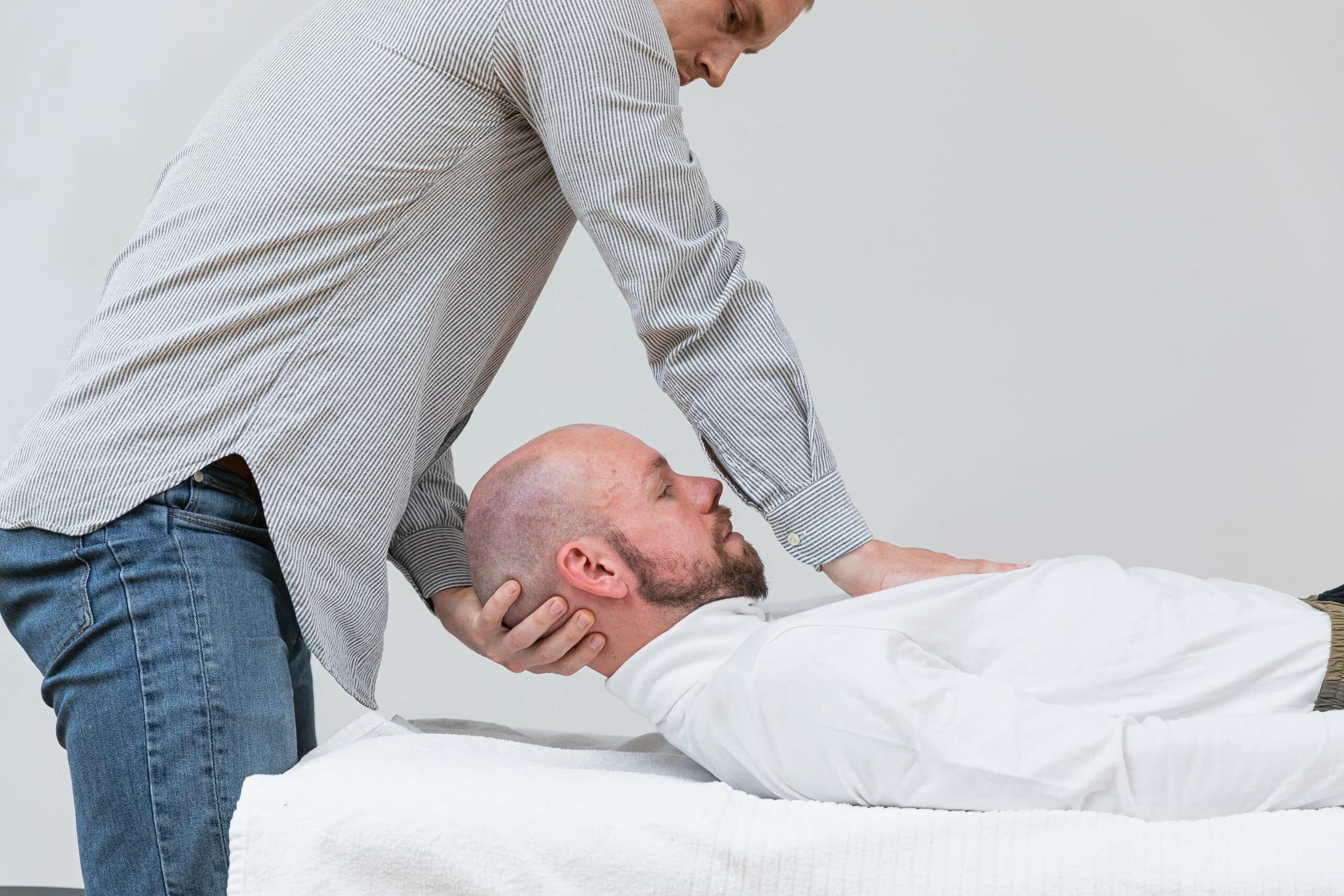
Vestibular dysfunction

Maxillary sinusitis

